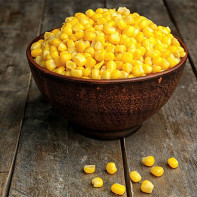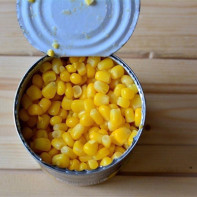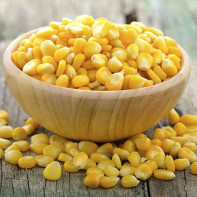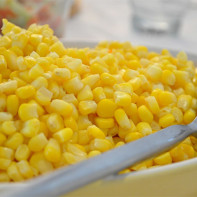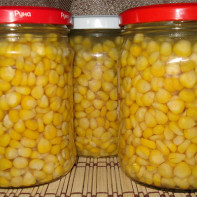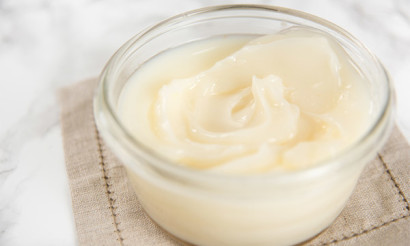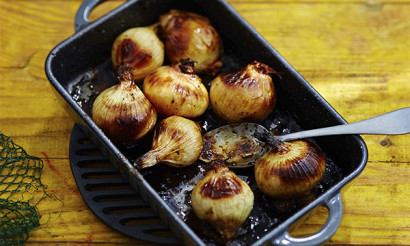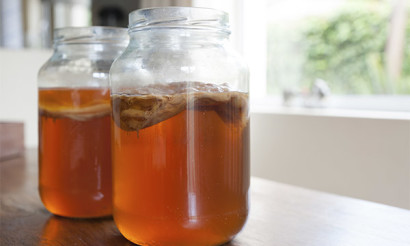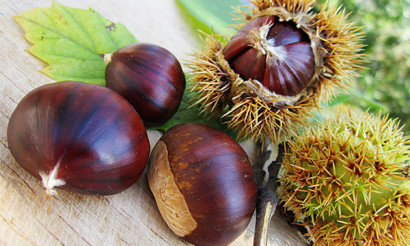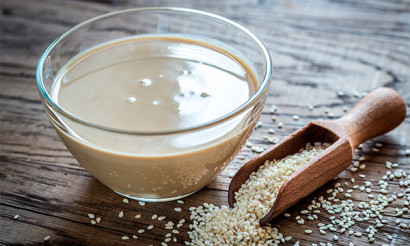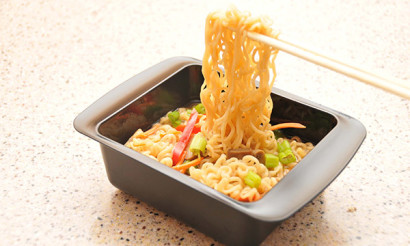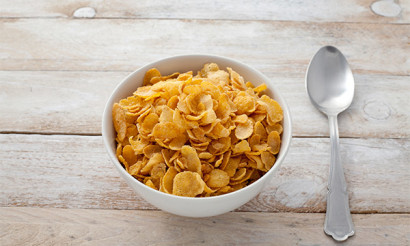Canned corn: benefits and harms
Corn is one of the most nutritious and biologically valuable cereal crops. The prevalence of a herbaceous plant has affected all continents, with the exception of Antarctica. Cereal has found application both in the culinary industry, and in the production of animal feed, and even in medicine.
- Composition and calorie content
- What is useful canned corn
- For women
- For men
- During pregnancy
- When breastfeeding
- For children
- Is it possible to eat canned corn while losing weight
- Canned corn in medicine
- With diabetes
- With pancreatitis
- With gastritis
- For constipation
- With gout
- Harm and contraindications
- How to pick and store canned corn
- How to preserve corn at home
- What can be made from canned corn
- Assorted Corn Salad
- Salad with Corn, Tomatoes and Parmesan Cheese Dressing
- Salad with carrots, mushrooms, chicken and corn
- Vegetable Soup with Corn
- Corn canned cream soup
- Shrimp and Corn Soup
- Can tinned corn be given to animals
- Interesting facts about corn
Composition and calorie content
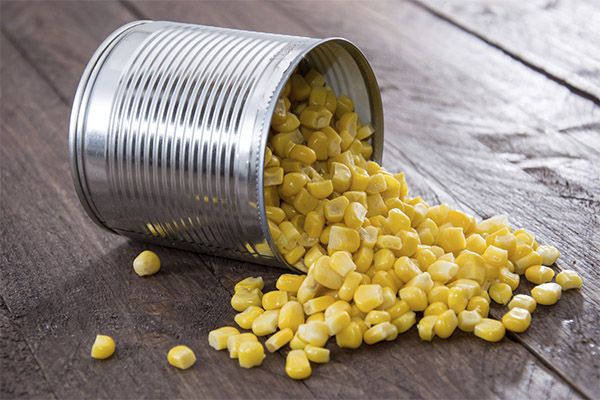
The composition of the product includes the following macronutrients:
- 2.3 g of protein;
- 1.2 g of fat;
- 14.3 g of carbohydrates (of which 4.3 g of sucrose, 2.0 g of fiber and 8.0 g of starchy substances);
- 81.4 g of water;
- 0.8 g of ash.
In 100 g of the product, 58 kcal.
In addition to macronutrients, canned corn contains the following micronutrients:
Vitamins
- Beta-carotene - is a powerful antioxidant and protects the body from free radicals and radiation.
- Retinol - improves the functioning of the optic nerve.
- Alpha tocopherol is an antioxidant that improves the condition of the skin, nails and hair.
- Ascorbic acid - an immunostimulant, increases the protective functions of the body.
- Thiamine - regulates metabolic processes, strengthens the nervous system.
- Riboflavin - is involved in the formation of hemoglobin, improves the condition of hair and nails.
- Niacin - takes part in the synthesis of proteins and triglycerides, and also helps to lower cholesterol in the blood.
- Choline - optimizes the amount of glucose in the blood, calms the nervous system.
- Pantothenic acid - has a healing effect, activates the process of creating antibodies in the blood.
- Pyridoxine - optimizes the composition of human blood, is able to regulate the process of sweating.
- Folic acid - controls the process of the formation of the neural tube of the fetus in pregnant women, promotes the growth and development of the child's body.
Trace elements
- Sodium - in conjunction with potassium is an integral part of the "pump", which regulates the processes of contraction and relaxation of muscles, conducts nerve impulses.
- Potassium - acts as a stimulator of muscle contraction and relaxation.
- Phosphorus is the main structural component of cell membranes, along with magnesium and calcium, performs a structural function.
- Magnesium - a structural element of bones and teeth, acts as an activator of enzymatic reactions in the body.
- Calcium is the main structural material of bone tissue and tooth enamel.
- Selenium is an antioxidant that suspends the growth and development of cancer cells.
- Zinc - has an anti-inflammatory effect, takes part in the metabolic processes of the body.
- Iron - normalizes the process of hematopoiesis, is the main component of the hemoglobin molecule.
What is useful canned corn
Mais has established itself as a low-calorie product, with a low glycemic index and high biological value. Due to the sufficient content of protein and essential amino acids, it is recommended to include it in the diet of athletes and vegetarians.
Consider individually the benefits for different populations
For women
This product is of particular value during menstruation, as it helps to reduce pain.Due to the high content of magnesium in the corn, it is able to normalize the work of the cardiovascular system.
For men
The product improves the functioning of the heart muscles, contributes to the increase and support of potency.
During pregnancy
Restrictions on the diet of pregnant women do not apply to this product due to its rich chemical composition. However, they should not be abused, as it can cause an allergic reaction. Maize has the ability to reduce swelling and toxicosis of the first trimester, nourishing the weakened body with biologically active substances, normalizes the general condition.
When breastfeeding
This product is not prohibited for use, but it is worth introducing it into the diet gradually and in small portions. The best age for introducing the product into the mother’s diet is from 3 months, since in an earlier period, maize can contribute to increased gas formation in the intestines of the child. After the baby reaches 6 months of age, it is necessary to include this product in the mother’s diet, since corn has the ability to improve lactation and saturates breast milk with the necessary trace elements for the baby.
For children
Due to the active fiber content, it is not recommended to introduce the product into the diet of children under 3 years old. However, after the specified age threshold, corn is an excellent source of fast carbohydrates and trace elements for the child's body.
Is it possible to eat canned corn while losing weight
Nutritionists do not recommend including this product in the diet of a person who is in the process of losing excess weight. As an exception, it can be introduced into food in small quantities, not more than 2 times a week. This is due to the high sugar content in the preservation fluid. However, boiled corn is an excellent alternative to canned corn. It has similar palatability and less sucrose in its composition.
Canned corn in medicine
Corn is an excellent source of biologically active substances, but it is recommended to use it in moderation even to a healthy person. If you take into account the characteristics of the human body suffering from a particular disease, you should consider recommendations for its use.
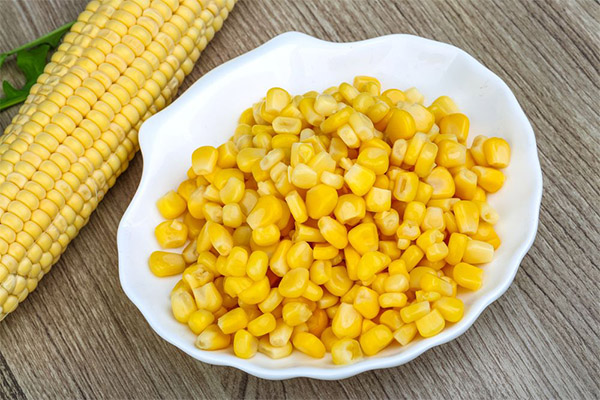
With diabetes
Depending on the type of diabetes, it is advisable to either completely eliminate the product from the diet or add in small quantities. In the first insulin-dependent type, dieticians completely exclude this product from the patient’s diet due to the high sugar content in it. In case of non-compliance with the doctor’s recommendations, there is a sharp release of glucose into the blood, which the human body simply cannot regulate with this disease due to the lack of its own insulin. If you ignore the situation, the blood sugar level will increase, which can lead to diabetic shock and coma. As for the second type of this disease, the introduction of corn into the diet should be under the strict supervision of doctors in order to maintain blood sugar in an area that does not pose a risk to human health.
Important: the glycemic index of canned corn is 59 units.
With pancreatitis
Pancreatitis is a manifestation of the chronic inflammatory process of the pancreas and does not allow the body to function fully. With this disease, products prepared using the process of smoking, pickling and canning are categorically contraindicated. Canned corn should be completely eliminated from use in order to avoid cases of exacerbation of the disease.
With gastritis
Gastritis, like pancreatitis, refers to diseases of an inflammatory nature, however, in this case, the walls of the stomach are the lesion area.With an exacerbation of the disease, doctors recommend abandoning products with a rough structure and acidic environment. Due to the preservation fluid, corn can be classified as acidic products. In addition, maize is rich in dietary fiber, which contributes to irritation of the intestinal wall. Therefore, one should minimize its consumption or completely exclude it from the diet during exacerbation of pathology.
For constipation
Canned corn is an excellent source of dietary fiber. These substances contribute to the activation of intestinal motility, eliminate putrefactive processes and can facilitate the bowel movement. Corn for constipation is not only useful, but also recommended for systematic use.
With gout
Gout is a consequence of impaired protein metabolism in the body. The main cause of the occurrence is the harmful effects of purine bases, which are found in meat processing products (broths, jellied meat). Strict restrictions on the use of canned corn in the diet are not provided, however, as with any balanced diet, it is necessary to control the optimality of the portion, not exceeding the daily allowance.
Harm and contraindications
Maize, like any other food product, can cause individual intolerance and an allergic reaction of the body. When introduced into the diet for the first time, it is worth consuming it carefully, in small quantities, gradually increasing the serving size. If an allergic reaction of the body (redness of the skin, rash, itching, shortness of breath) occurs while consuming a small portion of the eaten product, you should immediately contact specialists and completely exclude it from the diet.
Corn consumption should be completely excluded under the following conditions of the body:
- Thrombosis. In its chemical composition, maize contains a large amount of vitamin K, which has an active function of blood coagulation. This can be dangerous for people suffering from this pathology.
- Gastrointestinal diseases in acute form. Grain has a rough structure due to the high content of polysaccharides in it, which can have a traumatic effect on the inflamed walls of the stomach and intestines.
- Insufficient body weight. Due to its low calorie content and active biological composition, the product can be considered a diet product. With exhaustion, it can be dangerous, as it activates intestinal motility and reduces appetite.
Also, products made from genetically modified raw materials have a negative effect on the body, which completely crosses out all its useful biological properties.
How to pick and store canned corn
In order to avoid buying low-quality products and possible eating disorders, you should adhere to certain recommendations:

- First of all, it is worth finding information on the expiration date and storage conditions of products on the package. It is better to give preference to canned food with a shelf life of not more than two years and carefully study the final date of use. After the expiration of the specified period, it is strictly forbidden to eat products!
- It is better to give preference to products in glass packaging because of the possibility of a primary organoleptic assessment of quality. Corn grains must have a milky tint. If a more intense color is observed, this means that the cobs of the fetus were overripe at the time of production of canned food. A slight turbidity is permissible for brine, however, there should be no separate inclusions in it.
- If the product is packed in a tin can, it should be inspected for damage and bloating, since pathogens can cause food poisoning when the containers are depressurized. When shaking the container, the liquid splash must be deaf, otherwise a loud sound indicates the presence of excess air in the container, which could cause premature product spoilage.
- Preference should be given to products manufactured in accordance with GOST, since in this case the composition of the goods is clearly regulated in the state document indicated on the package.
Storage conditions
Before opening, the products should be stored in accordance with the instructions on the package, taking into account the shelf life, temperature and relative humidity.
Regarding storage after opening:
- If the container is glass, then the remains after use can be sent to the refrigerator for storage for no more than three days.
- If the container is tin, it is necessary to move the product with brine into an airtight container and also store in the refrigerator for no more than 3 days.
Can tinned maize be frozen
You can freeze canned corn kernels, however, it should be noted that the biological value of the product after thawing will be significantly lower than the original. This is due to the transition of water, which is present in the composition of the product, from liquid to solid state of aggregation. When freezing in a freezer with a temperature of up to -20 ° С, the cell walls break, as a result of which all water-soluble substances (B vitamins, ascorbic acid, macro- and microelements) contained in the product go into brine, which reduces the biological value of the product and reduces its beneficial properties.
How to preserve corn at home
For preservation, the fruits of medium maturity are most suitable. You can determine them by the medium-pronounced yellow tint and the absence of leaking fluid when you click on the grain.

For conservation, you will need:
- 1 kilogram of corn;
- 6 tablespoons of sugar;
- 2 tablespoons of salt;
- water.
Cooking method:
- Clear the cob from leaves and hairs.
- Trim damaged areas and rinse thoroughly with water.
- Boil in boiling water for 20 minutes.
- Cool and cut off the ears of corn at the base of the head to avoid damage.
- Pour grains into boiling water and cook over low heat for an hour.
- Pour the liquid in which the ears were cooked into a separate container.
- Pour the cooked grains into the prepared container, filling it by 75%.
- 1.5 liters of broth mixed with salt and sugar.
- Fill the jars with the resulting solution
- Sterilize and roll up caps.
What can be made from canned corn
There are a lot of recipes based on canned corn. Most often it is used for making cold salads and soups. Below are some interesting corn-based recipes.
Assorted Corn Salad
Essential Ingredients:
- eggs - 3 pcs.;
- onions - 1 pc.;
- cod liver - 115 g;
- hard cheese - 100 g;
- canned corn - 100 g;
- mayonnaise - 1 tbsp;
- green onion - 10 g;
- salt and spices to taste.
Cooking method:
- Rinse eggs and boil until cooked. Peel and dice.
- Chop the onion.
- Pound the liver with a fork.
- Grind cheese on a grater with a minimum diameter of holes.
- To all the ingredients add corn, green onions, season with mayonnaise. Mix.
- Place in the refrigerator until completely cooled.
Salad with Corn, Tomatoes and Parmesan Cheese Dressing
Ingredients:
- sweet pepper - 1 pc.;
- cherry tomatoes - 200 g;
- corn (canned food) - 450 g;
- green onion - 20 g;
- basil - 20 g;
- garlic - 5-10 g;
- mayonnaise - 80 g;
- sour cream 15% - 120 g;
- Parmesan - 25 g;
- salt and spices are optional.
Cooking recommendations:
- Wash vegetables under running water.
- Extract seeds from pepper and cut into large cubes.
- Tomatoes cut into slices.
- Chop green onions.
- Add corn to the ingredients.
- Chop the garlic.
- Chop the basil leaves.
- In a separate container, prepare dressing by mixing mayonnaise, sour cream, basil, cheese and garlic.
- Add black ground pepper and salt to taste.
- Mix the prepared sauce into the mixture of prepared vegetables.
- Refrigerate for 1–2 hours.
Salad with carrots, mushrooms, chicken and corn
Products required for the recipe:
- champignons - 150 g;
- chicken fillet - 350 g;
- carrots - 1 pc.;
- onions - 1 pc.;
- canned corn - 150 g;
- mayonnaise - 1-2 tbsp;
- sunflower oil - 1-2 tbsp;
- salt and spices are up to you.
Manufacturing Method:
- Boil chicken in boiling water until cooked.
- Cut the mushrooms into medium slices.
- Heat the pan, add vegetable oil and fry the mushrooms until a golden hue is formed.
- Grind carrots with a minimum diameter of holes.
- Cut the boiled fillet into a medium dice.
- Add corn, fried champignons to the mixture, season with mayonnaise and season to taste with salt and spices.
- Leave in the refrigerator for an hour, until completely cooled.
Vegetable Soup with Corn
Products for cooking:
- 2 tbsp green peas;
- 160 g canned corn;
- 2 tbsp olive oil;
- 1 stalk of celery;
- 1 clove of garlic;
- 1 potato fruit;
- 1 onion;
- 0.5 l of milk;
- 1 tbsp wheat flour;
- to taste salt and spices.
Stages of cooking:
- Grind the onion, celery stalk, clove of garlic, potatoes and carrots.
- Heat the pot over low heat, add oil and pass the prepared vegetables, with the exception of carrots and potatoes, until a golden crust forms on the surface.
- Add carrots to the pan and continue frying for three minutes.
- Add flour to the vegetable mixture, mix.
- Pour the fried vegetables with milk and boil.
- Add potatoes to the mixture and boil all the ingredients for 20 minutes.
- Pour peas into the pan, boil the mixture for 5 minutes.
- Add salt and spices as you wish.
Corn canned cream soup
Ingredient composition:
- a can of canned corn;
- 2 tbsp wheat flour;
- 3 cups of milk;
- 4 tbsp sunflower oil;
- 3 glasses of water;
- to taste salt and spices.
Manufacturing technology:
- Grind the corn in a meat grinder.
- Boil in a saucepan with 3 cups of water.
- Wheat flour in a pan with the addition of vegetable oil.
- Add hot milk to the flour, bring the mixture to a boil.
- Add crushed corn grains to the boiling mixture, mix and cook for 15–20 minutes.
- To achieve a more creamy consistency, pass the soup through a sieve.
- Bring to taste with vegetable oil with spices.
Shrimp and Corn Soup
Required Products:
- a can of tinned maize;
- 200 g of shrimp;
- 2 cups of milk;
- 2 glasses of water;
- 2 tbsp. l wheat flour;
- 20 g butter;
- salt and spices as needed.
Recipe:
- Drain the brine from the jar with corn, turn the grains into a puree mass using a blender.
- Move the mashed corn into the pan and pour 2 cups of water.
- Boil the mass over low heat, stirring systematically to avoid burning at the bottom of the dishes.
- Boil milk in another bowl.
- Melt butter separately from the above ingredients.
- To the oil gradually, stirring vigorously, add the sifted flour. Follow the process so that the mixture does not turn into a lumpy mass.
- Stir in hot milk.
- With the formation of lumps, grind the mixture of flour and oil with a blender, before cooling it.
- Mix a mixture of flour, butter and milk with corn puree. Bring the mass to a boil.
- Separately boil the shrimp until half ready and clean them of the shell.
- In the previously prepared mixture, add peeled shrimp and bring to taste with salt and spices.
- Boil the soup for 5-7 minutes until the shrimp is ready. However, do not neglect the recommendation regarding time, since shrimp become stiff with long cooking.
Can tinned corn be given to animals
The diet of animals, like humans, should be balanced and contain enough carbohydrates, fats and proteins. Corn is an excellent source of vegetable proteins and carbohydrates, however, a canned product contains preservatives, to which the animal's body reacts more intensively.
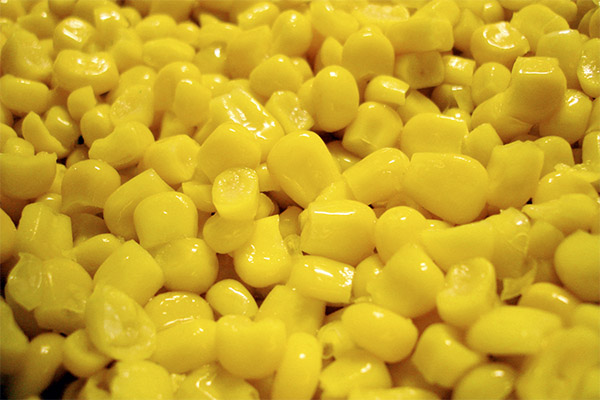
If only natural ingredients are indicated in the composition, then such a product can and should even be given to pets. However, if preservatives are found in the composition, the addition of this product to a pet's food should be limited.
A great alternative in this situation is boiled corn, which will prevent the manifestation of disorders in the gastrointestinal tract of the animal without loss of taste.
Interesting facts about corn
- For the first time corn is mentioned in documents dated 12 millennium BC.
- The ancient Mayan tribes worshiped the god Ah Moon, known as the "god of corn." It was believed that the cereal was sent to the earth as a gift from the ancient god.
- Corn has more than a thousand different varieties, but only maize (or, in other words, sweet corn) is consumed.
- An ear of corn contains about a thousand grains. This number can vary up or down, but it always remains even.
- Corn contains 24 chemical elements from the periodic table of D.I. Mendeleev.
- Corn cobs, depending on the variety, can be of different colors. There is even a special breeding variety, Glass Jam, on the cob of which the grains have a multi-colored color.
- Corn is used not only in the food industry, but also for the production of fuel, building adhesives, plasters, plastics and even rubber.
- In many states of America, as well as in other countries of the world, a number of monuments have been erected in honor of the love of this cereal.
- On the territory of the famous Ukrainian agricultural park "Kukulabiya" there is a labyrinth of corn land.
«Important: all information on the site is provided exclusively in fact-finding purposes. Before applying any recommendations, consult with a profile specialist. Neither the editors nor the authors are liable for any possible harm caused materials. "

